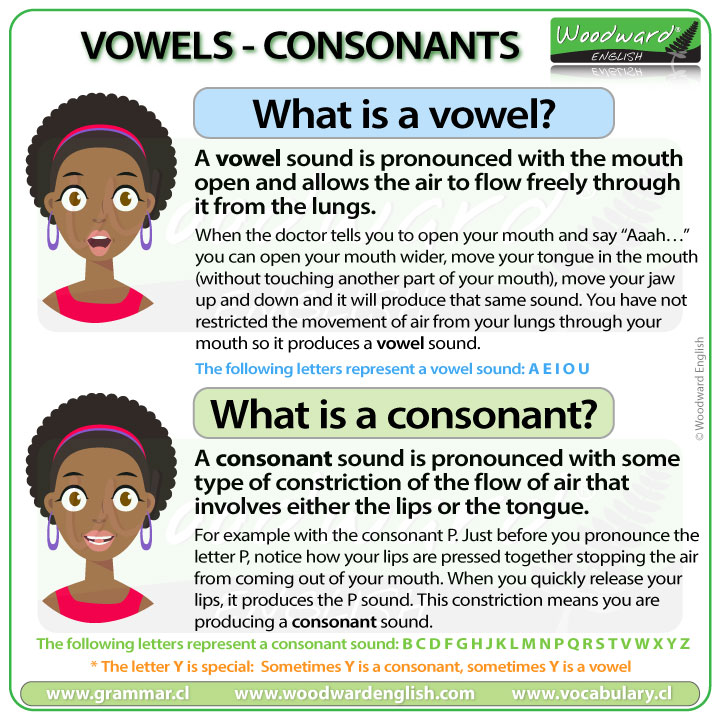What is the difference between a vowel and a consonant?
To avoid giving an intense linguistic definition, I will try to keep things very easy and give a simple explanation about the difference between a vowel and a consonant.
What is a vowel?
A vowel sound is pronounced with the mouth open and allows the air to flow freely through it from the lungs.
When the doctor tells you to open your mouth and say Aaah… You can open your mouth wider, move your tongue in the mouth (without touching another part of your mouth) and move your jaw up and down and it will produce the A sound. You have not restricted the movement of air from your lungs through your mouth so it is a vowel.
The following letters represent a vowel sound: A E I O U
What is a consonant?
A consonant sound is pronounced with some type of constriction of the flow of air that involves either the lips or the tongue.
For example with the consonant P. Just before you pronounce the letter P, notice how your lips are pressed together stopping the air from coming out of your mouth. When you quickly release your lips, it produces the P sound. This constriction means you are producing a consonant sound.
A consonant requires the mouth and tongue to “shape” the sound.
The following letters represent a consonant sound: B C D F G H J K L M N P Q R S T V W X Y Z
Try the following
Try to make a vowel sound (such as an A) without moving your mouth (touching your lips/tongue) … yes, you can do it.
Try to make a consonant sound (such as an F) without moving your mouth (touching your lips/tongue) … no, you cannot do it.
That is the difference.

More about Vowels and Consonants
You may be interested in our basic lesson about vowels in English and consonants in English.
The letter Y
Did you know that the letter Y represents a vowel sound AND sometimes a consonant sound. See our lesson about Is the letter Y a vowel or a consonant? (Coming Soon)
from Woodward English https://www.woodwardenglish.com/vowel-consonant-difference/
No comments:
Post a Comment